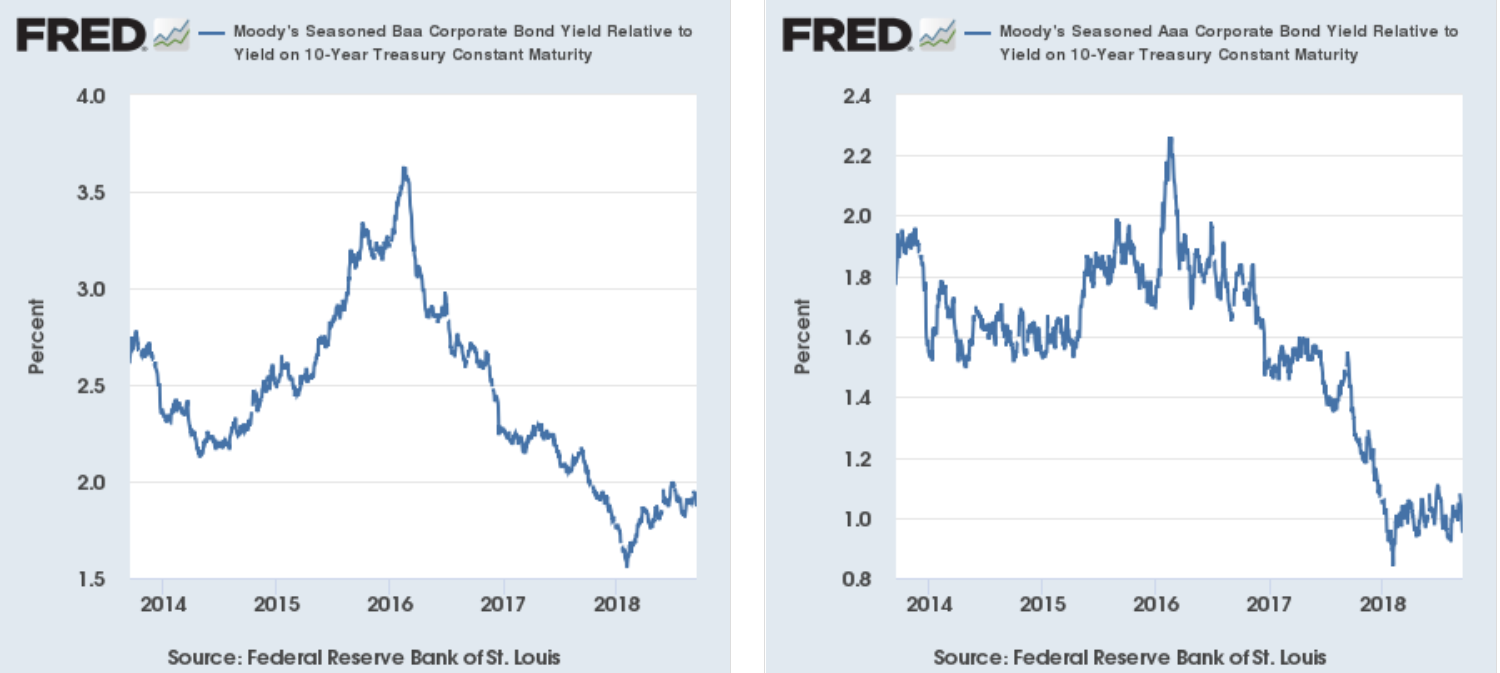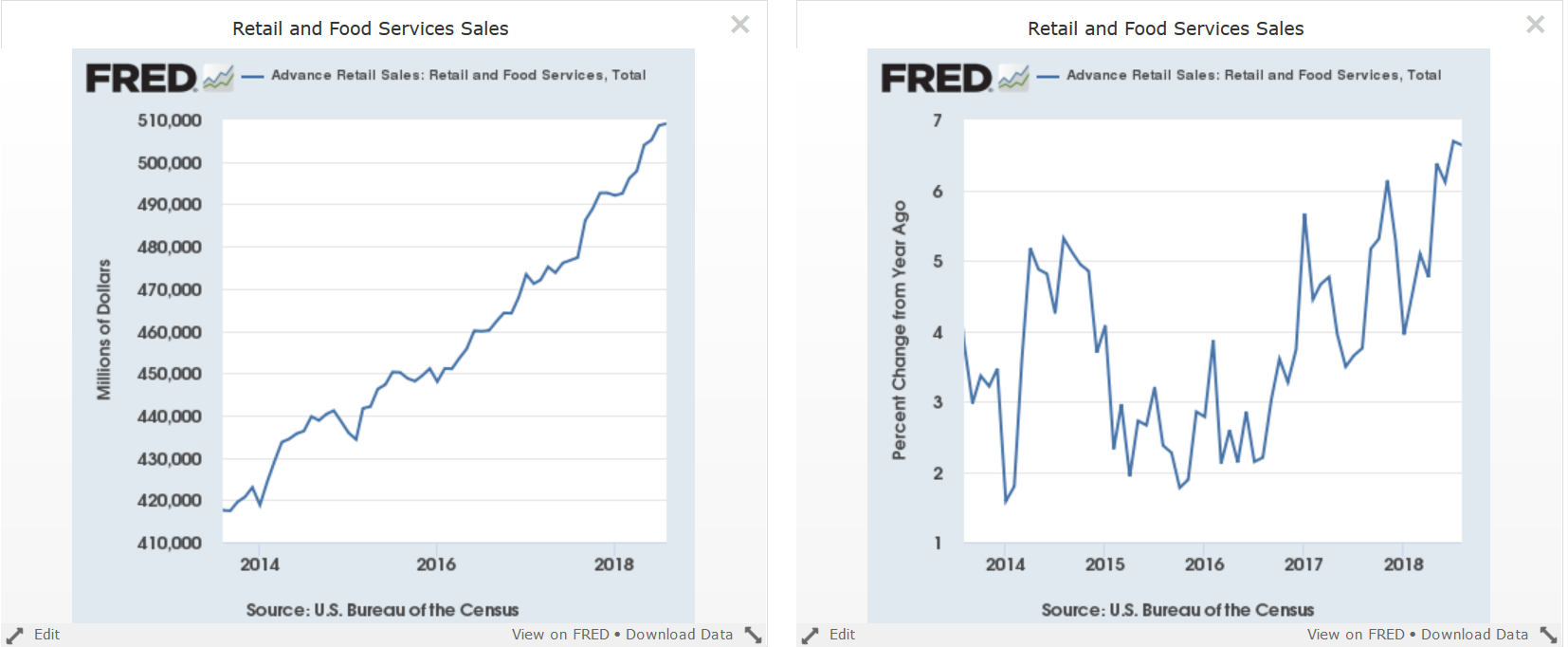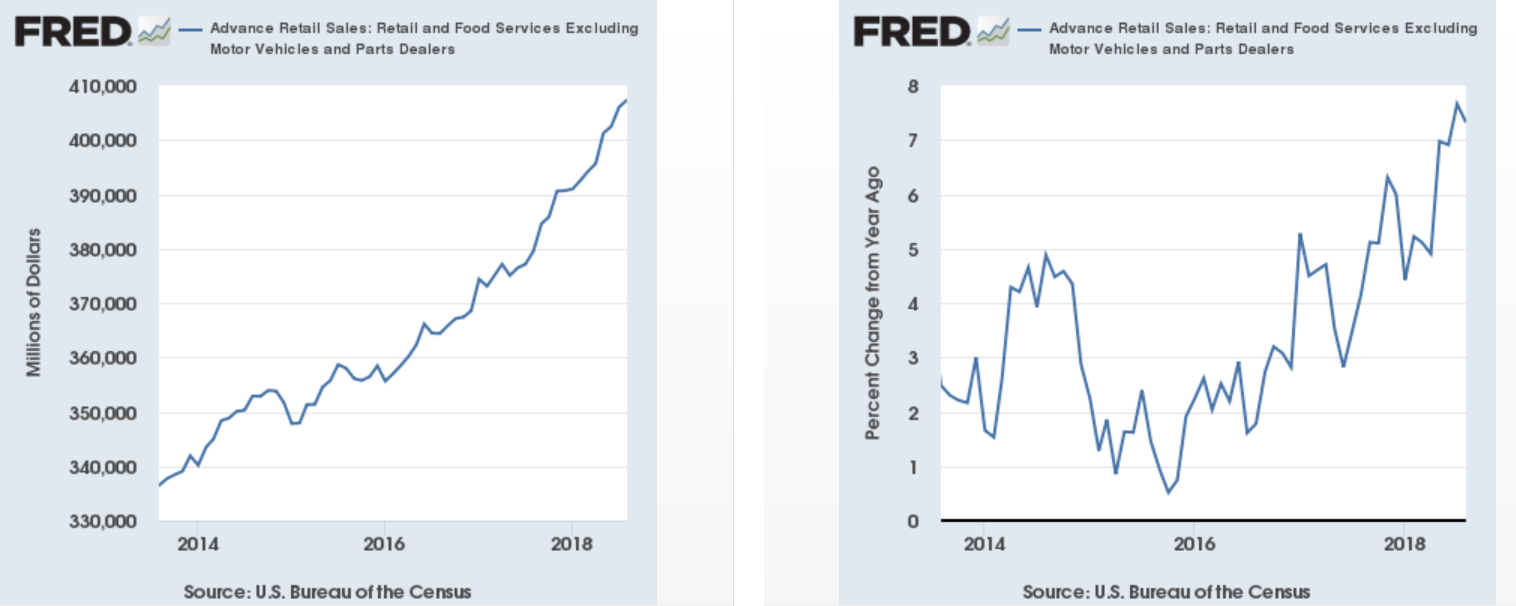Summary- The credit markets are still liquid.
- Retail sales are increasing.
- Industrial production is strong.
The purpose of the Turning Points Newsletter is to look at the long-leading, leading, and coincidental economic indicators to see if the economy is about to transition from expansion to contraction - to see if the economy is at a "Turning Point."
Let's start with a basic question: can borrowers still borrow money cheaply? That's the reason we use most credit market yields as leading indicators: lenders start jacking up interest rates long before the economy starts to go into a tailspin.
So can we get good rates on loans? The answer is, mostly, yes.
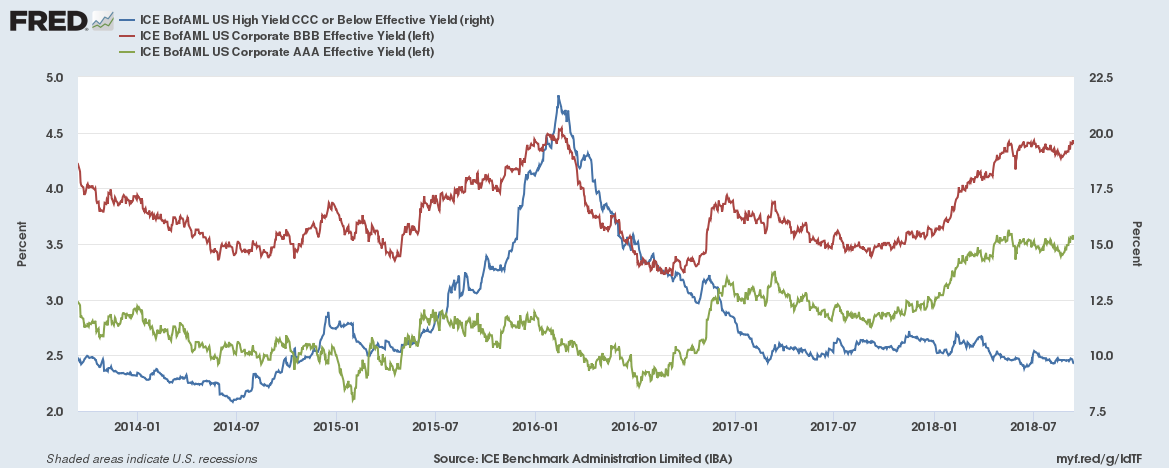
I've got a lot of data above, so let's go through it slowly. CCC yields are in blue and they have a right-hand scale. When these yields blow out, you know there might be a problem. Right now, everything is capiche. Both BBB (in red, right scale) and AAA (in green, right scale) are contained. On one hand, rates are still low. But they have been moving up, which might lead you to think a problem might be at hand. But, alas, no. The relative spreads of corporate credit to Treasury yields are contained:
Baa (left) and AAA (right) relative to the 10-year Treasury are very low.
So, the credit markets are still liquid.
Let's turn to the coincidental indicators because this week we had two new data points: retail sales and industrial production, which answers two key questions: are we still buying stuff and are we still making stuff?
Let's start with retail sales:
Sales only increased .1%, but that's because auto sales declined .8%. That data point can be pretty volatile. Here's the long-term (5-year charts) of total retail sales and retail sales ex-autos:
Both are in a solid 5-year uptrend (left side) while the Y/Y percentage change is just a smidge lower than its respective 5-year high (right charts). While the weak reading might be somewhat disappointing, the long-term series says consumers are still spending money.
Next, up, let's look at industrial production, which answers the question, "Are we still making stuff?"
Here's the table from the Federal Reserve Report:
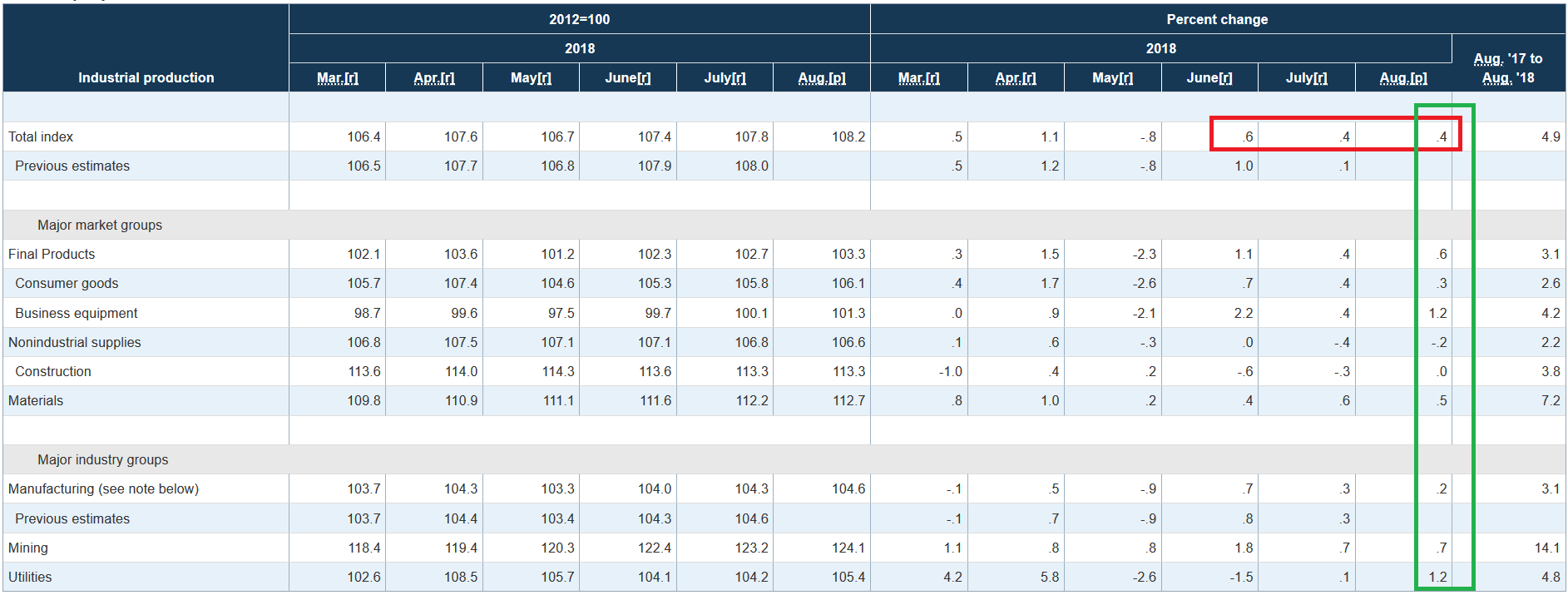
Let's look at this from two perspectives. The red box shows the monthly increases for the last few months. We've had increases for the last three months; we've seen growth in 5 of the last 6. The green box shows what segments gained last month. There were increases across the board, save for non-industrial supplies. Put more succinctly, we're still making stuff.
Let's look at this data long-term:
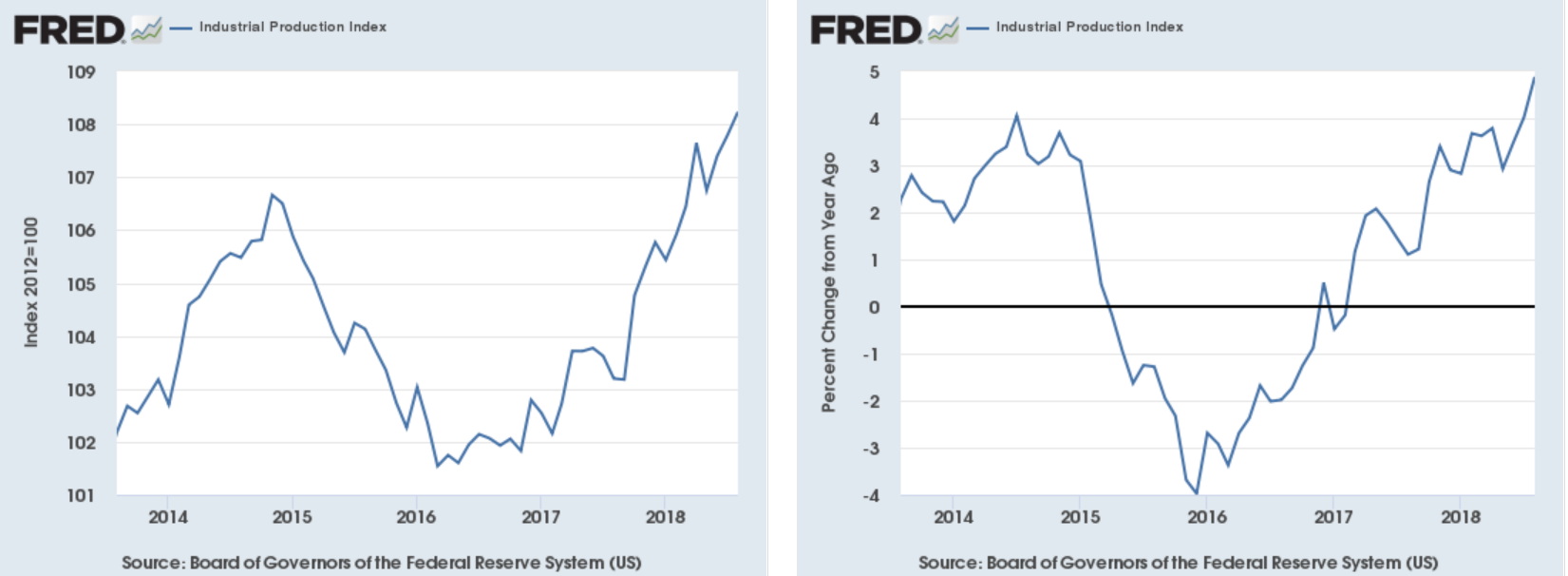
IP dropped between 2015 and 2016, thanks to the oil market collapse. Thankfully, that disaster was contained to that sector. Since the beginning of 2017, industrial production has been in a strong uptrend, which we see in the Y/Y numbers on the left.
This data jibes nicely with the ISM manufacturing index:

And the regional Fed manufacturing data:
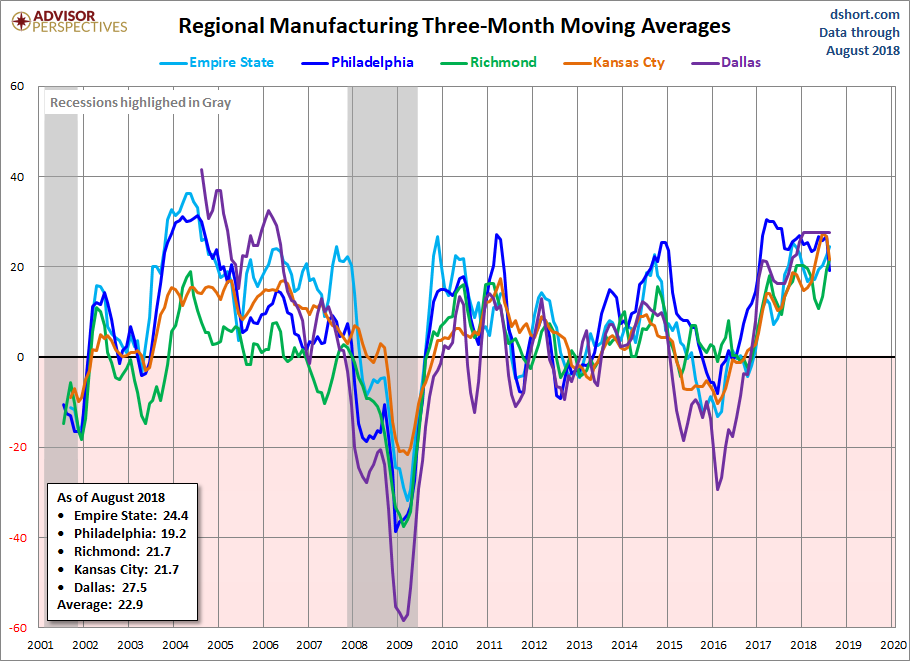
So, we're still making stuff.
Recession probability in the next 6-12 months? Pretty low right now.

